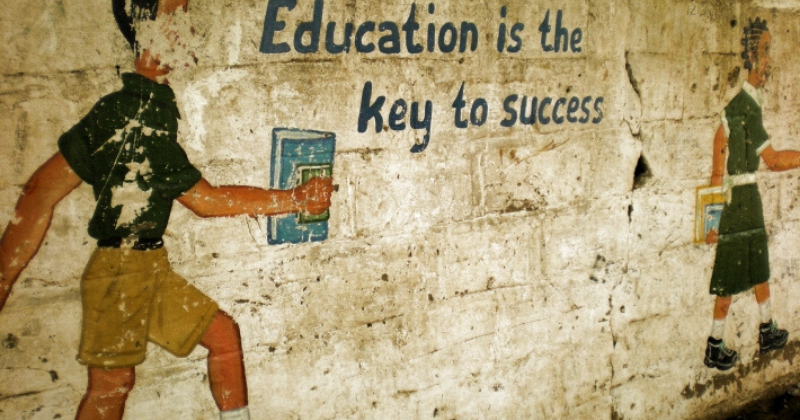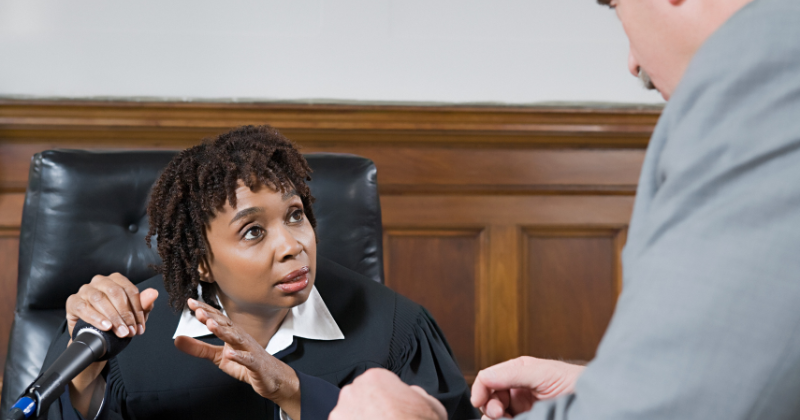By Walter Amoko
Given the different religious and cultural backgrounds of students, religion can be a flashpoint for potentially debilitating conflicts in schools and other learning institutions. This is profound as schools should ideally present an opportunity to live out at an early stage in the development of young and impressionable citizens one of the aspirations contained in the preamble to our Constitution, “proud of our ethnic, cultural and religious diversity, and determined to live in peace and unity as one indivisible sovereign nation.”
Ideally, the balancing of dissimilar sets of beliefs and practices in schools can lead to a virtuous circle of plurality and harmony as opposed to a vicious one of intolerance which could set the stage for religious discord that has blighted much of human history and is still prevalent in some parts of the world.
Historical Backdrop
The history of the enlightenment values of religious freedom and tolerance was partly borne out of repudiation of among other things religious persecution of minority religious groups as they all once were, before the Catholic hegemony was broken; the religious wars that plagued 16th and 17th Century Europe; the sad history of persecutions of non-favoured religion in England since King Henry VIII denounced Papal authority culminating in the infamous abuses by the Star Chamber as shifting religious affiliations of English monarchs targeted different groups; and the mass migration to the ‘New’ world to avoid persecution.
The shift to the recognition of freedom of conscience was animated by the spirit of toleration of the plurality of the religious belief as explained by John Locke – “What has produced all the religious quarrels and wars that have occurred in the Christian world is not the (inevitable) diversity of opinions but rather the (avoidable) denial of toleration to those who are of different opinions.” Articles 27 and 32 of the Constitution repudiate the history of religious conflicts and persecutions and instead embrace and entrench the tolerance Locke advocated.
It was inevitable that the balance (or imbalance, if you will) of religion in schools would be the subject of Constitutional litigation especially on behalf of religious minorities. Initial challenges before the High Court failed as the Judges felt religious minorities were essentially asking for a special pass they were not entitled to, exempting them from general laws and regulations. These cases include Ndanu Mutambuki & 119 others v Minister for Education (2007) eKLR, Republic v Kenya High School & another ex parte SMY (2012) eKLR, Mohamed Fugicha v Methodist Church in Kenya & 3 others (unreported) Meru Petition 30 of 2014; Seventh Day Adventist Church (East Africa) Ltd v Minister of Education & others (2014) eKLR.
In the Ndanu Mutambuki case, Justice Nyamu dismissed an interlocutory application seeking conservatory orders in a Constitutional petition based on Section 78 of the old Constitution in which female minors belonging to a church known as Arata Aroho Mutheru Society challenged a prohibition against the wearing of headscarves in school, as wearing such headscarves was a mandatory requirement of their faith. Justice Nyamu was unimpressed and dismissed the application as he found no infringement of the rights guaranteed under Section 78 of the old Constitution. It was held, amongst other things, that headscarves were not a fundamental tenet of the petitioners’ faith but an afterthought arbitrarily introduced by their spiritual leader. The Judge further found that upon admission to the school, the petitioners’ consented to wear the prescribed uniform and that the uniform requirement was justified in order to instill discipline and equality in school and under Section 70 of the previous Constitution.
Expansive Bill of Rights
With the promulgation of the current Constitution, which boasts an expansive Bill of Rights, it was expected that the resolution of such challenges on behalf of religious minorities would be different. Surely Article 8 of the Constitution which stipulates that there is no state religion thus making Kenya a secular state and the explicit provisions in the Bill of Rights that are, “an integral part of Kenya’s democratic state and is the framework for social, economic and cultural policies”, dictated a favourable outcome. The expectation was also founded upon Article 32 on freedom of conscience, religion, belief and opinion, Article 56 on protection of minorities and Article 27(4) which prohibits discrimination on account of among, other things, religion, conscience, belief and culture.
Dashing such hopes was the Kenya High School case, in which the applicant sought an order compelling the Principal and Board of Governors of the Kenya High School to allow students professing the Islamic faith to wear the Hijab as directed by the Ministry of Education. Following the decision of the Ndanu Mutambuki case, Justice Githua dismissed the petition holding that the rights under Article 32 were not absolute and could be legitimately restricted to prohibit wearing of hijabs for the sake of a common uniform for all students. The Judge also invalidated the directive from the Ministry.
Further decisions referred to above followed this trend as religious minorities were required to conform with general rules of school respecting days of worship or dress code notwithstanding contrary dictates of their faiths.
In effect, the High Court continued to uphold arguments offered by the affected learning institutions which include dystopian nightmares in which liberally allowing the practice of divergent faiths would visit unmanageable chaos in the learning institutions and offend the practices and beliefs espoused by the sponsoring religious groups or the religious history of the school would be adversely affected by allowing religions alien to it.
Institutions also claim that they face challenges, for example, that some religious groups worship on different days of the week whilst others would demand to dress in a particular manner different from majority of the learners. They add that in a bid to ensure equality and avert any form of discrimination, all learners regardless of their social and religious background, ought to be subject to the same rules and regulations prescribed by the learning institution which they voluntarily agreed to be bound by upon admission. In any event, the Courts had to respect their right to run the institution as they deem fit.
Progressive Precedents
The Court of Appeal has now in two separate decisions by differently constituted panels vindicated the hope of religious minorities who are being forced to conform with majoritarian practices at the expense of their conscience or the tenets of their faith.
In Mohamed Fugicha v Methodist Church in Kenya & 3 others (2016) eKLR, the Court considered an appeal from the decision of the High Court which had dismissed a Constitutional petition where the petitioner had sought the declaration that the decision to bar his daughters, Muslim girls, from wearing hijab and white trousers in a Methodist Church sponsored school, was unconstitutional.
In allowing the appeal, the Court emphatically upheld the freedom of religion, and rejected the notion that equality requires equivalent treatment. Their Lordships held:
“To our mind this is a duty requiring a sponsor to rise above and go beyond the narrow parochialism and insularity of its own religion or denomination and respect the equal right of others to be different in religious or denominational persuasion. It is a call to broadmindedness and respect for others including those whose creeds and the manner of their manifestation may be unappealing or baffling. It is a duty to uphold the autonomy and dignity of those whose choices are discordant with ours and acknowledgment of heterodoxy in the school setting as opposed to a forced and unlawful artificial and superficial homogeneity that attempts to suppress difference and diversity.
“…In obedience to that explicit direction, we are clear in our minds that the view we have taken that the Muslim girls ought to have been allowed to wear the hijab promotes the values and principles of dignity, diversity and non-discrimination. We also advance the law by making a definite finding that what the school did to Fugicha’s daughters’ amounts to indirect discrimination, a concept on which there appears not to have been any judicial engagement from the jurisprudence that has so far flowed from the High Court. We affirm, endorse and uphold the rights of equality and freedom of religion as set out in Articles 27 and 32 of the Constitution.”
This has been followed and emphatically affirmed in Seventh Day Adventist Church (East Africa) Ltd v Minister for Education & others (unreported) Civil Appeal No. 172 of 2014 in which their Lordships succinctly capture the core of the freedom guaranteed under Article 32 of the Constitution.
“The right to freedom of conscience, religion, thought, beliefs and opinion, as explained above in its various facets is far-reaching and profound; it encompasses freedom of thought on all matters, personal conviction and the commitment to religion or belief, whether manifested individually or in community with others, privately or in public. The manifestation through observance includes observance of a day of worship, and a believer will not be subject to coercion which would impair his freedom to have or to adopt a religion or belief of his choice.”
The Court subjected the various justifications offered by learning institutions to searing scrutiny and ultimately rejected them, reminding learning institutions of their obligations to operate within the law and to respect the rights of students.
The Judges were not insensitive to the problems of balancing the competing interests in issue and therefore provided guidance as to how this was to be achieved under the concept of reasonable accommodation whereby, “In schools with multi-faith students, the students are able to co-exist, each practising their respective religions and balancing that with their right to education under the law, while at the same time, complying with school rules and regulations.” At the heart of such reasonable accommodation is the requirement that to honour and give effect to the Constitutional guarantee of conscience, schools must be prepared to incur the costs and bear inconvenience required for rights to be respected.
They also gave valuable elucidation as to what was required for a restriction on the exercise of a fundamental right or freedom to pass muster under Article 24 of Constitution, holding that all its strictures must be fully complied with, for a restriction to be upheld.
Lessons Learned
The lessons to be taken from the foregoing is that learning institutions need to bring themselves up to speed with the Constitutional and statutory duties by not only permitting learners to fully subscribe to and practise any faith of their choice but also avoid imposing their preferred religion upon learners. They also need to adopt liberal thinking which promotes religious diversity and strive to eliminate any form of intolerance or discrimination. In the words of Judge Dickson in R v Big M. Drug Mart Ltd (1985) 1 SCR 295:
“A truly free society is one which can accommodate a wide variety of beliefs, diversity and tastes and pursuits, customs and codes of conduct. A free society is one which aims at equality with respect to the enjoyment of fundamental freedoms… Freedom must surely be founded on respect for the inherent dignity and the inviolable rights of the human person. The essence of the concept of freedom of religion is the right to ascertain such religious beliefs as a person chooses, the right to declare religious beliefs openly and without fear of hindrance or reprisal, and the right to manifest religious belief by worship and practice or by teaching and dissemination.”





